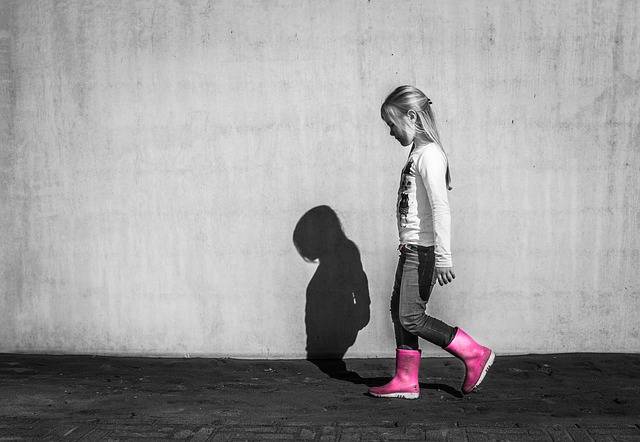Standing and walking meditations have the common aims of helping us to get in touch with our bodies, to become grounded, to slow down the pace of our lives and to clear our minds of constant chatter. I have previously written about mindful walking and here I want to talk about using standing and walking meditations together.
Standing meditation
The idea in the combination approach is to use standing meditations as bookends for a walking meditation – that is, as you complete each forward and return leg of a walking meditation, you stop and complete a standing meditation.
The standing meditation begins with being aware of the feel of your feet on the floor, then being conscious of the muscles that support your upright position. You can hold your arms in any number of ways – with your hands loosely in front of you, your arms hanging loosely beside your body or joined loosely behind your back. I find that with my arms hanging loosely beside my body, I almost immediately find the tension draining out of my arms and hands.
The standing meditation can involve mindful breathing, body scan, inner awareness or open awareness – taking in sounds, sights, and smells. The key aim is to be present in the moment, in touch with your inner and outer reality.
Walking meditation
There are many forms of walking meditation and what I will cover here is an approach that is used in combination with standing meditations. Walking meditations are valuable because we spend so much of our day moving around, typically racing from one place to another in pursuit of our time-poor way of life. All the time as we move, our minds are also racing – we become caught up in thinking about what needs to be done, planning our actions or feeling concerned about possible undesirable outcomes.
Walking meditation enables us to get in touch with our body and at the same time to notice what thoughts are continuously preoccupying us. I found for instance that the thoughts that continually invaded my consciousness as I was doing a walking meditation all related to some form of planning or other related thinking activity – planning for the things that needed to be done after the meditation or the following days.
Tara Brach suggests that if you walk indoors, it is useful to have a walking space that is 15 to 30 steps in length. This means, in effect, that there is no end goal in terms of where you are trying to get to physically – which counters our daily habit of being goal directed in every movement. Instead, with the walking meditation we are very present to each step, each movement forward – not pursuing an end goal. It also provides the opportunity to undertake a standing meditation at each end of the walking space to add increased stillness and serenity to our mindful walking practice.
The idea is to start to walk a little bit more slowly than you usually walk and, at the same time, to pay attention to the sensations in parts of your body, e.g. your feet, lower legs, arms, chest and thighs. In contrast to your standing or sitting meditation, your breathing will tend to be in the background and your bodily sensations in the foreground.
The basic idea is to become conscious of lifting your feet, stepping out and landing your feet in front of you. The standing meditation at the end of each leg of the walking space involves pausing and stillness and thus deepening your grounding and your awareness of the present moment.
As we grow in mindfulness through combining standing and walking meditations, we become more grounded, more conscious of our bodily sensations and tensions, more in tune with our present reality and better able to be still and silent and to open ourselves to the richness within and without.
By Ron Passfield – Copyright (Creative Commons license, Attribution–Non Commercial–No Derivatives)
Image source: courtesy of Skitterphoto on Pixabay
Disclosure: If you purchase a product through this site, I may earn a commission which will help to pay for the site, the associated Meetup group and the resources to support the blog.
